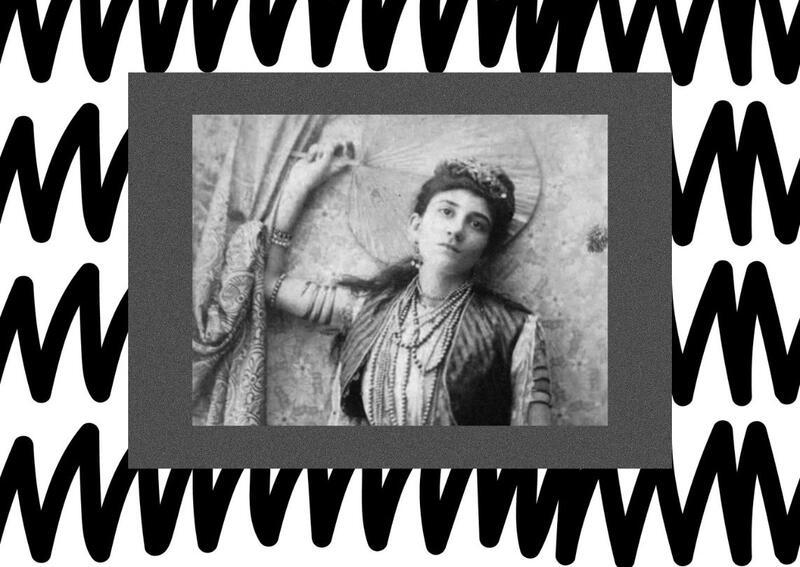Reporting the Truth with Rachel Sassoon Beer
I’ve always been a news reader. I remember when my dad first taught me how to read The Sunday Times, how to unfurl the crisp pages so that I could untangle the world. I must have been six or seven, so I didn’t really know what anything meant, only that every word was important, each sentence of immense value. I would always get frustrated when I couldn’t hold the newspaper right, when it bent sideways or folded over onto itself. Smart people knew how to read newspapers, I thought, and I wanted to be smart. At first, I liked to flip to the crossword in The New York Times or the cartoons on the last page of The New Yorker. Gradually, I learned how to appreciate the words typed on each newsprint page.
The news has since become a part of my daily routine. I take the school bus every morning and check the headlines on The New York Times app. I sometimes even plug in my wire headphones and lean my head against the frosty bus window while listening to NPR's Up First. There’s something about knowing the news that gives me perspective on my day. Knowledge of the world around me makes me feel grounded. I can walk into my first class each day knowing where I, and where the world, stand.
I don’t often find peers who share this passion of mine. Many of my friends even prefer to be out of the loop. I’ll often mention a current event in passing, and I’m rarely surprised when my peers return only blank stares. Keeping up with the news is exhausting. Current headlines designed to grab our attention are rarely positive or uplifting, and, as a teenager, it’s easy to feel helpless in the face of our reality.
Though formal news seems to be somewhat out of style, each person has the opportunity to become their own reporter through social media. Studies have found that my generation, Gen Z, is much more likely to consume news on social media than any other source. Broad access to social media means that personal news stories have a significantly greater reach than they have ever had in the past. There are both good and bad sides to this phenomenon. While a more intimate connection to news stories can be extremely important in garnering support for a cause, this relatively new ability to share individual opinions with large crowds could become extremely dangerous.
The now ordinary opportunity to share one’s opinion with the world has been highly restricted throughout history. Even with the growth of the newspaper industry, one perspective was often pushed out of publication: that of women. When newspapers were the only way to quickly share an opinion with a vast public readership, women were discounted. It wasn’t until the 1890s, when Rachel Sassoon Beer, a Jewish woman living in London, became the first woman to edit a national newspaper, that a female perspective was broadly included in newspaper publication.
Though she met a somewhat tragic ending when she struggled with her mental health (possibly due to syphilis contracted from her husband), Beer truly was an important Jewish woman of her time. She was born into the Sassoon family of Baghdad, a group of prominent merchants. When she was two, her family moved to London, where her father became a prominent figure in the Jewish community. In London, she received a private education, worked as a nurse for two years, and eventually married Frederick Arthur Beer in 1887. When the couple married, Frederick recognized his wife’s intellect and passed along the operation of The Observer, which had been given to him by his father, Julius Beer. Though she did not start out as a writer, Sassoon-Beer was known as an organized and fair manager and began sending in her own writing to be published in the paper. Eventually, Beer worked her way up the ranks. She became the first female editor-in-chief of a national newspaper. While editorship of one newspaper would have been groundbreaking enough, Beer simultaneously obtained editorship of The Sunday Times in 1893.
By taking on the position of editor at nationally published newspapers, Beer broke a glass ceiling. This alone makes her an inspiring figure to a news-lover like me. In discussing Beer, however, I can’t disregard her privilege. While her later work proved that she clearly deserved her positions, Beer received them through marital and familial connections, something most people didn’t and don’t have. Even still, Beer did not take her work for granted. Beer’s dedication is a message for us in the modern world. The ability to share information should be regarded with the utmost importance.
Even as Beer’s existence in these positions of power is inspiring, her work, and specifically her work surrounding the Dreyfus affair, is even more poignant today. In 1894, Jewish French general Alfred Dreyfus was convicted of treason. Ferdinand Esterhazy, the real perpetrator, had framed Dreyfus for his actions. Like many others, Beer had an immediate interest in this case. Antisemitism was a driving factor in Dreyfus’ conviction, and Beer hoped to prove the masses wrong. By 1898, she had personally obtained unequivocal evidence that Dreyfus was innocent: a confession of forgery from Esterhazy. When Beer published her findings, she both set in motion the movement that would eventually free Dreyfus and received major backlash from other communities. This backlash was most certainly rooted in deep-seated antisemitism towards both Beer and Dreyfus.
But Beer persisted. Her choice to challenge the popular opinion in this widely publicized case was an act of protest. She understood her responsibility: find the truth and share the truth. Even in the face of an unforgiving world, this Jewish female editor fought for what she knew was right. Because of Beer, Dreyfus was freed.
There are many lessons Beer’s story has to teach. Most broadly, she teaches persistence in the face of adversity. She teaches that we should formulate our own opinions, an increasingly difficult task in current times. In our modern age, monitoring the news proves to be an impossible task. With billions of social media users spread across many different platforms, misinformation spreads just as quickly as a deadly virus. In fact, it can be the reason why people die from such a virus. In her own way, in her own time, Beer fought against misinformation. She’s a role model for modern feminists as well as for that little girl who yearned to hold the pages of the newspaper just right. Now, through social media, we are all journalists and editors in our own right. We each hold these highly coveted positions, and we all must share in the responsibility that Beer took so seriously: to fight for what we know is true.
This piece was written as part of JWA’s Rising Voices Fellowship.







